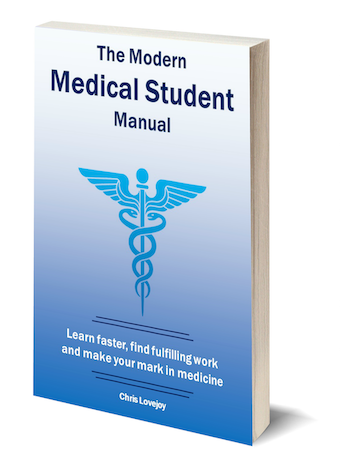A Scientific Approach to Research (Part 2) - The Supervisor
See Part 1 here.
The supervisor
As a student, you will need a supervisor on board for the project. They will be able to provide you feedback throughout the project, know-how about the publication process and may be required for certain applications (such as ethical clearance for studies involving patients).
Choosing the supervisor
The supervisor you choose can have a major impact on the quality of your project so it is worth investing a significant amount of time finding the right one. The ideal supervisor is someone with relevant experience of the field your study is in, a good record of publishing papers and who will be able to find the time to give you regular feedback and help with challenges that arise. There is really nothing more valuable than feedback from your supervisor at every stage of the process.
For the first two points, it is worth doing an extensive background search on the internet including PubMed. See how often they are publishing papers, in which journals and what research questions they are trying to answer. For the third point, the best source of information is people who have previously done projects with them. Do you know anybody, or is there anyone who could put you in touch with somebody?
It would be useful if your supervisor is in your area, so that you can meet face-to-face, but this is not essential; discussions via email and/or skype can be adequate.
Contacting the supervisor
Contacting a renowned scientist to pitch your project idea can be daunting but it’s important not to be put off. Most researchers would love the prospect of an enthusiastic student pitching them ideas.
Two ways to contact a potential supervisor are face-to-face or by email. Face-to-face relies on them being in your location. If you know they are giving a talk, pay attention to the talk and ask questions at the end. Then go and speak to them about your idea. If they work at a nearby hospital, go to the hospital and find their office or a ward or clinic they are working at and ask to meet them. Be prepared to be told to come back another day or to book an appointment. This may seem daunting, but good things come to those that push their comfort zone.
If contacting via email, I would advise including a personalised introduction to get their attention and let them know you are serious. For example, “I was reading about your work on…”, “I read your book about… and thought…”. Try and link it into the rest of the email, which should include a succinct description of your project, it’s purpose, what you hope to achieve and what you want them to help with.
Most importantly, keep trying. You may have to contact a lot of people but don’t be put off. Krtin Nithiyanandam was fifteen years old when he contacted over a hundred labs. He was rejected but almost all of them, but ended up discovering a new diagnostic test for Alzheimer’s Disease.
Here are two example emails that I have used to secure projects:
Email 1
Here I had a specific project in mind and a specific doctor who I hoped would act as the project lead.
Dear Dr ____,
I am a Cambridge medical student with a project idea related to (specialty). I am currently looking for a project lead and would be interested in meeting to discuss this with you.
My project idea is to __. This would involve:• Compiling a database of ____ (this will require ethical approval)• Training a neural network to ____ (this will involve some consultant consensus)_
Correspondingly, our main requirements from a project lead would be help with:• Attaining ethical approval• Assisting with data collection for the database• Provided consensus on the ¬¬_____
Our aim is to ______, with potential use in education and clinical practice.
Would you be happy to meet to discuss the project further? If not, could you recommend other clinicians who may be interested in being our project lead?
Kind regards,Chris Lovejoy
Email 2
In this case, I had a few project ideas rather than a specific project and was more focussed on doing a project with a particular doctor.
Dear Dr ___,
I am a fifth year Cambridge medical student who recently completed my rotation at ____ Hospital, during which time I attended your teaching – you may remember me as the student who brought your book to the teaching._
I greatly enjoyed reading your book and I share your desire to contribute to the improvement of healthcare provision, as well as possessing an interest in ___. From __ until ___ this year I will be undertaking my SSC and I would love to work with you to better understand how I can increase my contribution to the medical field and to gain more experience in ___. I am enthusiastic, ambitious and willing to invest large amounts of time and effort both inside and outside the hospital.
Kind regards,Chris Lovejoy
Writing the paper
A good supervisor will give advice on what information to include in each section. There are also many useful guides available on the internet.
One short and well-written article which is a great introduction for writing your first paper is http://www.liebertpub.com/media/pdf/English-Research-Article-Writing-Guide.pdf. It outlines what should be written in each section and suggests the best order to write them in.
A more detailed guide is available on PubMed here: https://www.ncbi.nlm.nih.gov/pmc/articles/PMC3474301/.
MEDICAL STUDENT CHALLENGE 2: Undertake at least one research project based on an idea that you come up with.
CHAPTER 5 SUMMARY
- Developing the ability to think well can benefit your own life and the lives of those around you.
- Scientific research can help you develop this ability if you think of your own ideas and undergo continual trial-and-error.
- Active brainstorming is a useful way to think of new ideas to use in scientific research or elsewhere.
- Finding a good supervisor is important. It can be hard but persistence and strategy is important.
Continued in Chapter 6.
This is a chapter from The Modern Medical Student Manual. A full list of chapters are below:
- Introduction: From That Day To This Book
- Chapter 1: Medicine from Fifty Thousand Feet: Perspective, Targets and Limits
- Chapter 2: The Fundamentals of Fast Learning - Part 1 and Part 2
- Chapter 3: Mastering Clinical Medicine - Part 1 and Part 2
- Chapter 4: Increasing our Impact (and the power of Self-Education) - Part 1 and Part 2
- Chapter 5: A Scientific Approach to Research - Part 1 and Part 2
- Chapter 6: Commanding Clearer Communication - Part 1 and Part 2
- Conclusion
Plus Bonus Chapters:
- Bonus Chapter 1: If Medicine Gets You Down
- Bonus Chapter 2: Is Medicine Right For Me?
- Bonus Chapter 3: Memorisation Techniques (by Dr James Hartley)
- Bonus Chapter 4: Learning from Others in Medicine


Comments powered by Disqus.